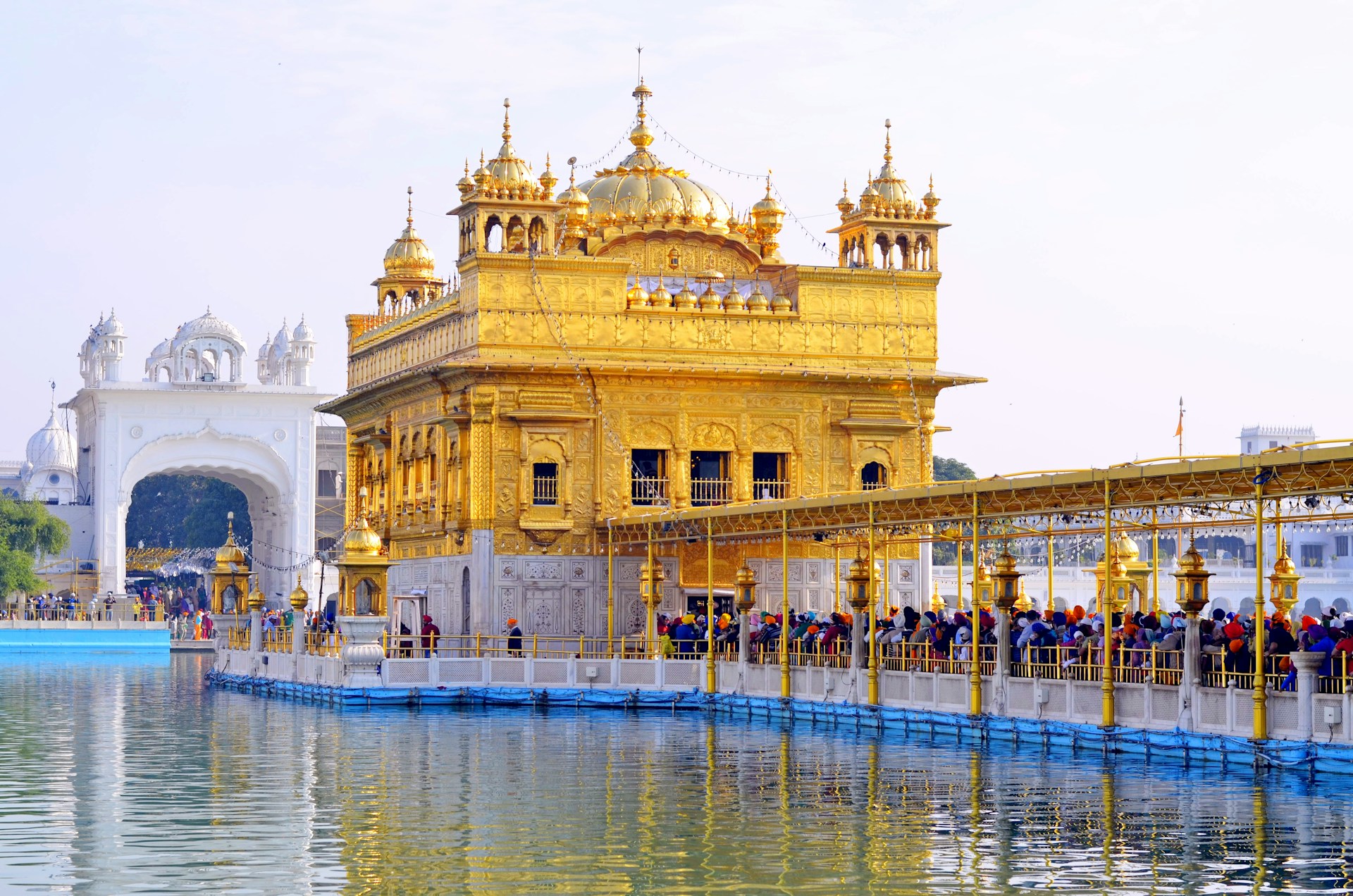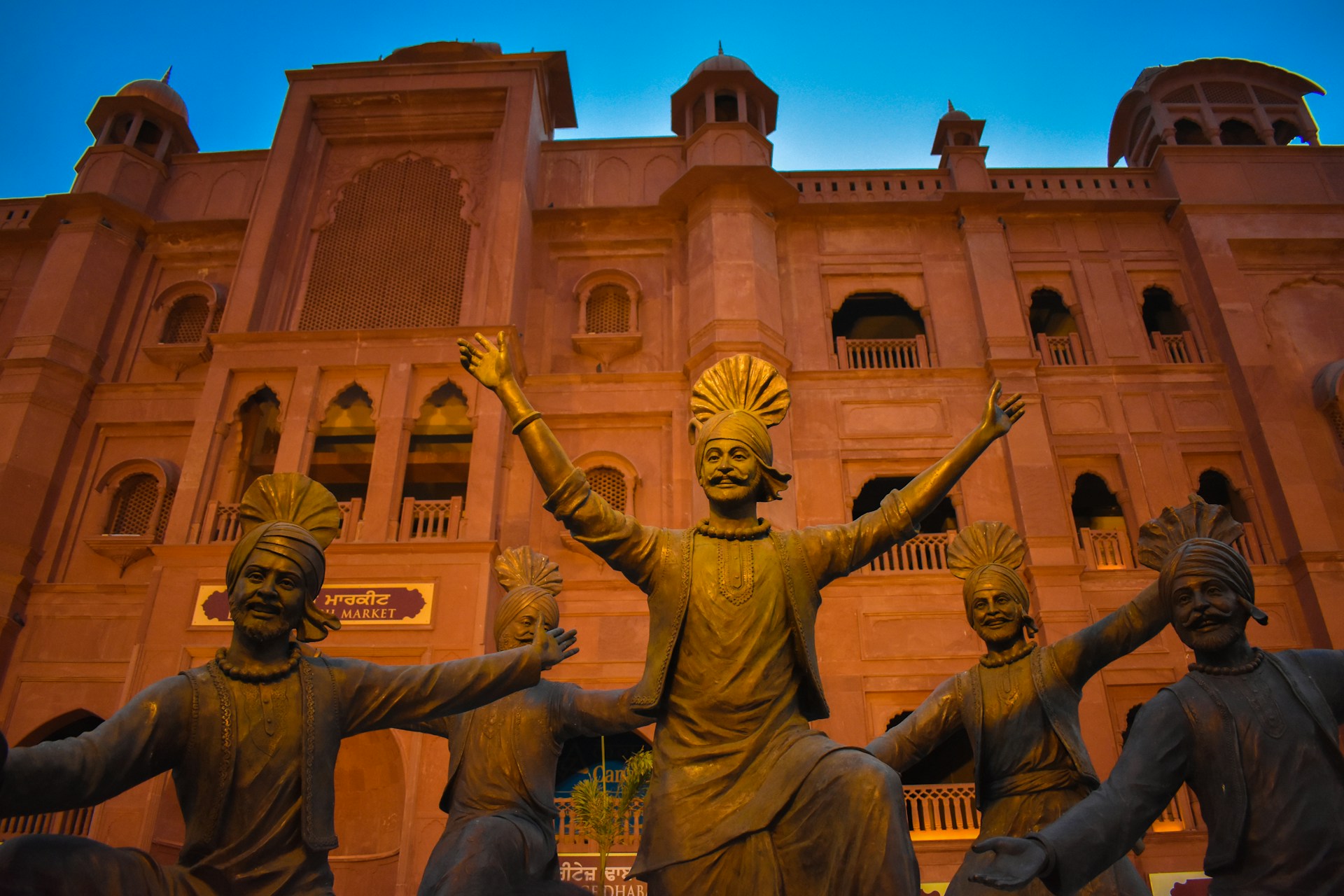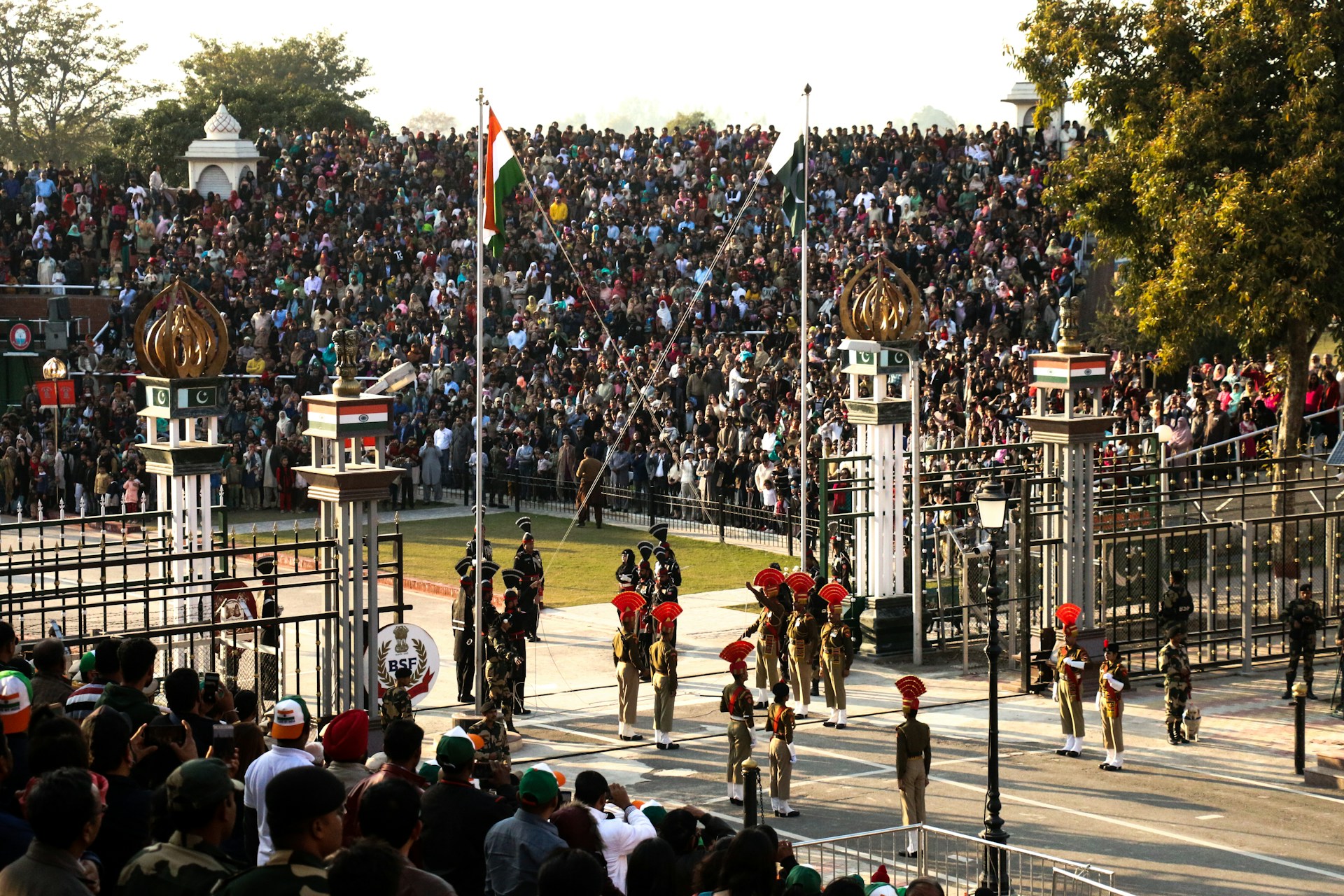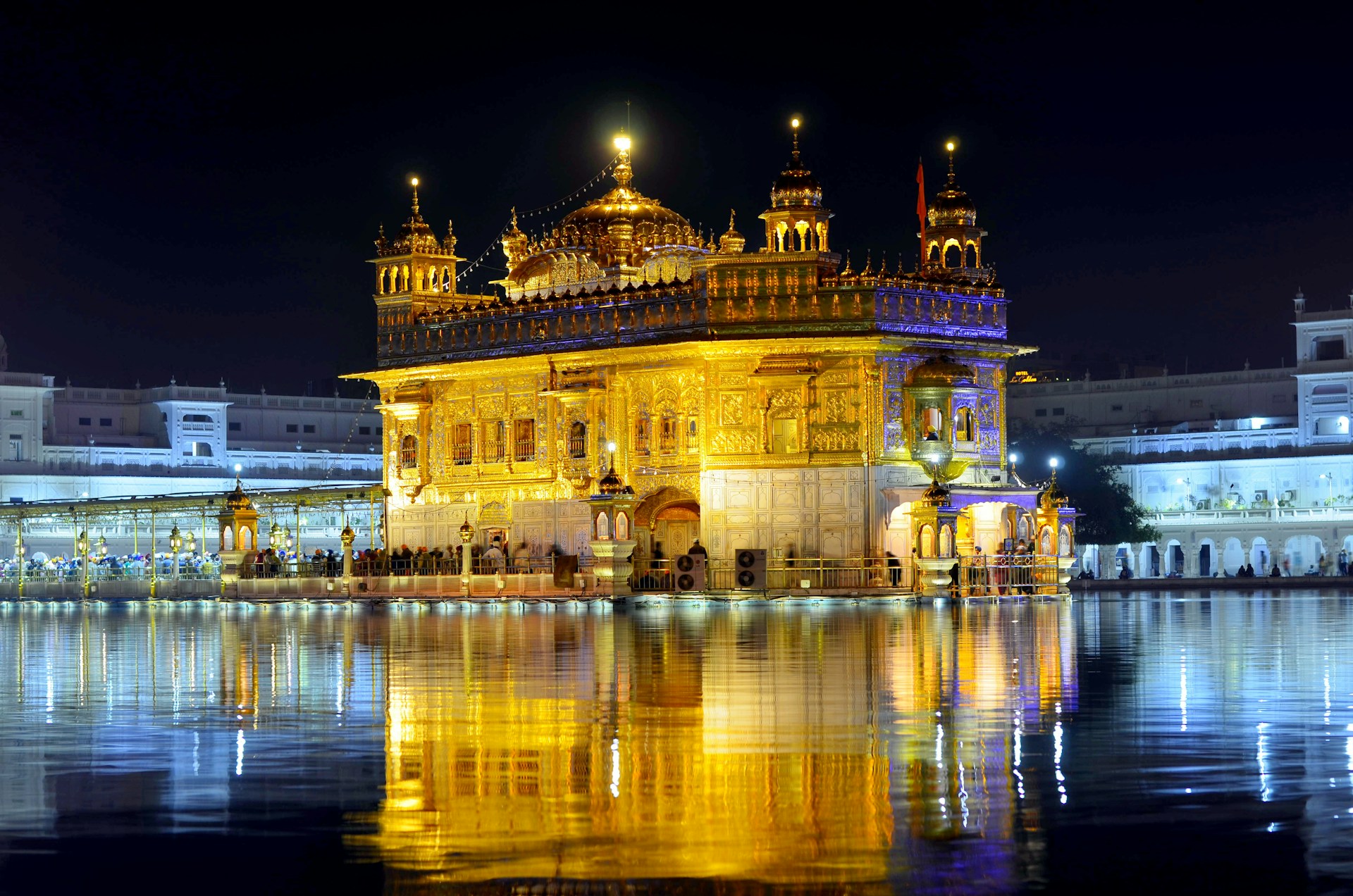
Golden Temple
PC: Laurentiu Morariu

Bhangda
PC: Neelakshi Singh

Atari Border
PC: Godwin Angeline Benjo

Punjab is a state which is internationaly renowned for its cuisine like butter chicken, Makke di Roti (cornbread) and Sarso da Saag (mustard greens).
Bhangda and Giddha are traditional Punjabi dance forms which requires enermous energy and Punjabi music can make anyone dance on its drum beats.
Punjab is also land of bravehearts which significantly contributed during Indian independence movement. Unfortunately people of punjab suffered the most during
partition of India in 1947 when millions of peple were uprooted from their homes. Jaliawala baug is one of many such places which still exists to narrate cruelty
of british on innocent people of pre-independence era.
Harmandir sahib or famously known as Golden temple is a "must visit" place for tourists irrespective of their beliefs. Serene atmoshphere of temple complex fills
one's heart with peace and blissfulness.

Harmandir Sahib is the holiest shrine in Sikhism. The temple was established by Guru Ram Das, the fourth Sikh Guru, in
16th centuryn and was later developed by 5th Guru, Guru Arjan Dev in 1604. Dome of this temple is covered by gold plating
and hence this temple is famously known as Golden temple. Temple is surrounded by Amrit Sarovar (Pool of Nectar) and hence
this city is known as Amritsar.
The temple complex also houses Akal Takht which is the highest seat of authority in Sikhism. Moreover, the community kitchen
runs 24x7 within the temple complex which serves simple meal to approximately 50,000 to 60,000 visitors daily and this
number touches to 100,000 during some special days. The kitchen is funded entirely by donations not only from the Sikh
community but also from devotees of other beliefs.

Jallianwala Bagh is a memorial garden that commemorates the tragic massacre of hundreds of unarmed civilians by British
troops on April 13, 1919. This garden is located in Amritsar at walking distance from famous Golden Temple.
The garden features a memorial structure, bullet marks on the walls, and a well where many people jumped to escape the
firing. It serves as a reminder of India's struggle for independence and the sacrifices made during the freedom movement.

Sheesh Mahal (Mirror Palace) was built by Maharaja Narinder Singh between 1845 and 1862. It is one of the magnificent
structures of Patiala city.
The palace depicts architectural proficiency of that time. It is renowned for its intricate mirror work, colorful frescoes,
and exquisite craftsmanship. The palace's interior walls and ceilings are adorned with thousands of pieces of mirror,
creating a mesmerizing visual effect. It served as the royal residence and audience hall for the Patiala rulers.

Sheesh Mahal (Mirror Palace) was built by Maharaja Narinder Singh between 1845 and 1862. It is one of the magnificent
structures of Patiala city.
The palace depicts architectural proficiency of that time. It is renowned for its intricate mirror work, colorful frescoes,
and exquisite craftsmanship. The palace's interior walls and ceilings are adorned with thousands of pieces of mirror,
creating a mesmerizing visual effect. It served as the royal residence and audience hall for the Patiala rulers.